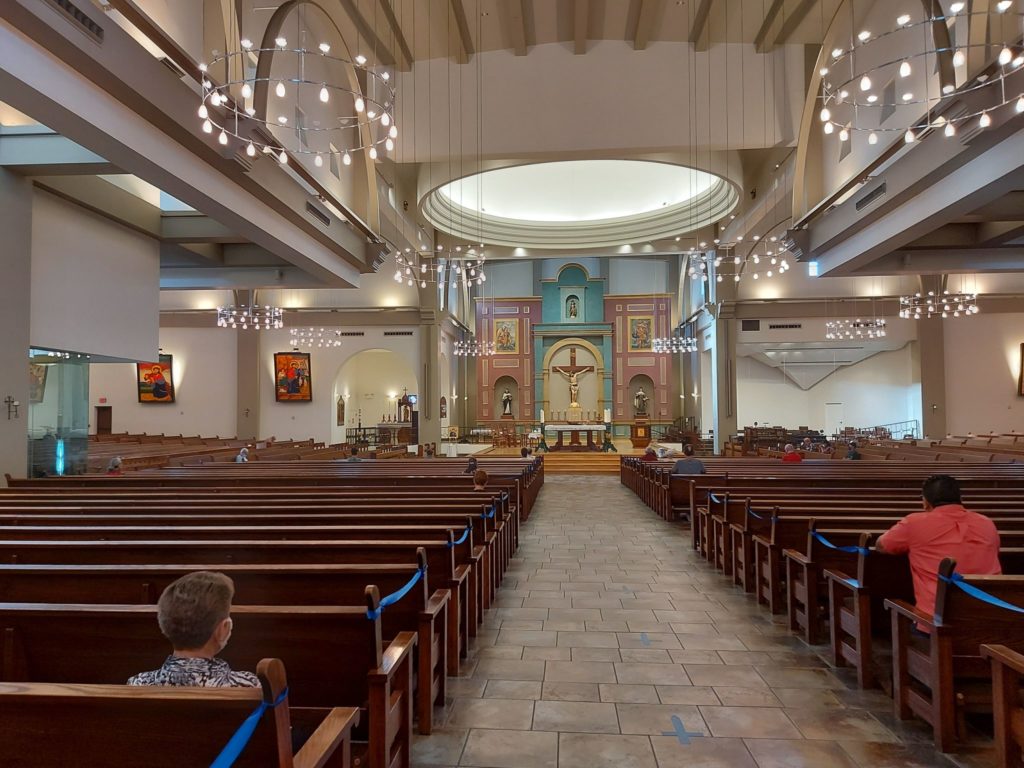Our parish church St Thomas Aquinas -Avondale Goodyear, Arizona (USA), is cruciform in plan. It has a three-part nave with the more prominent and more extended faces the sanctuary. The other two naves are at both sides perpendicular to the sanctuary opposite to each other. Generally, it has a T-shape space layout.
In the past, we always sit at the left side nave where an access door is just across the parking area. It is convenient for anyone to enter, especially the physically disabled.
But we can only see the side of the altar, the ambo, and even the Presider and his ministers. The opposite side (right side) is visible, and a portion of the immense nave facing the altar.
Later, we transferred to the nave facing the sanctuary and found the place good enough to see the Priest and the ministers and their movements on it. The sitting position has an advantage for active participation visually and mentally.

The Pandemic came, and the church was closed. After a period, the church opened and allowed physical presence. The number of people had come lesser even on the Sunday liturgy, as we maintain the same seat location facing the sanctuary.
With my wife Ching coming to the church recently for the daily masses, we sit on either location, and later, we were on a nave facing the sanctuary. As usual, the liturgy starts with the introduction by a reader at the ambo using the sound system. We noticed that the sound created an echo. This was not the usual sound during the Sunday liturgy. When the Priest and the Deacon march at the central aisle, my eyes were scanning the church interior to get some possible factors affecting the acoustical issues.
The liturgy started, and the battery-operated wireless microphone of the Presider and the Deacon went well.
This experience made us compare the sound quality when we were at the side naves. We observe that the sound of the speakers installed at the walls to serve both of the side naves is audible compared to the sound quality at the front nave that generates an echo.
The situation reminded me of our subject acoustics during college to make some assessments. I could think that echoes generated are due to the proper location of speakers; a larger portion of the nave is unoccupied with only a few occupants, where a long travel distance of the direct sound creates reverberation of more than one-tenth of a second.
Acoustics for churches designed for full occupancy may not be adequately serving during these pandemic times since the quality of sound is always a requirement in the whole celebration of the liturgy.
When the audibility of sounds in the liturgy is affected with or without Pandemic, this problem shall be addressed. Provision of temporary speakers in due location; installation of absorbing materials in strategic areas to compensate for the lesser absorbing capacity of the people is a possible practical solution.
However, regardless of this difficulty, the faithful shall always focus and participate actively in celebrating the liturgy.







